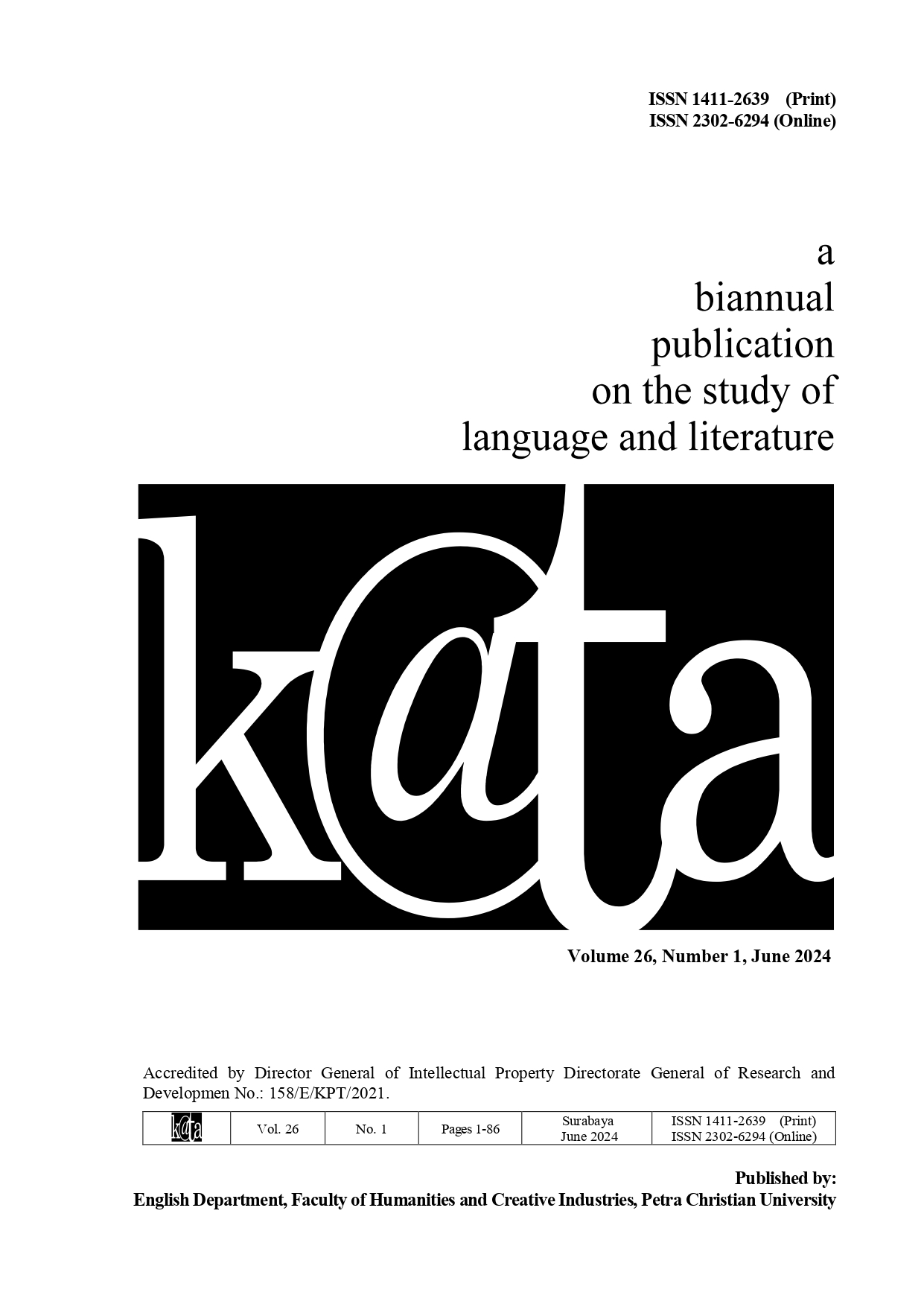An Acoustic Study on English Vowels Produced by Indonesian Speakers: Exploring Determining Factors and Contact Situations
Abstract
Compared to English varieties spoken in the inner circle (e.g., Australian English and New Zealand English), the English variety spoken in Indonesia, especially in acoustic phonetics, is still understudied. Using the Praat computer program, this acoustic study investigates the English vowel production of fifteen Indonesian females and males. The formants (F1 and F2) of their English vowel in words heed /hid/, hid /hɪd/, head /hÉ›d/, had /æ/, hod /hÉ‘d/, hawed /hÉ”d/, hood /hÊŠd/, who’d /hud/, hud /hÊŒd/, and heard /hÉd/ are measured and then compared with the vowels produced by American English speakers. Regardless of the speakers’ gender and English skill levels, the vowels [æ] and [É‘] show the most significant differences between Indonesian and American English speakers. The difference in this study is conditioned more by linguistic factors, i.e., phonetics and phonemics, than by non-linguistic factors, i.e., gender and English skill level. The findings of this study offer a discussion of how acoustic evidence resulting from language education may shed light on possible language contact situations.
Downloads
References
Boersma, P., & Weenink, D. (2021). Praat. doi. ng phonetics by computer [Computer program] (version 6.1.55). Retrieved from University of Amsterdam. http://www.praat.org/
Coates, J. (2015). Women, men and language: A sociolinguistic account of gender differences in language (3rd ed.). Routledge. https://doi.org/10.4324/9781315645612
Crystal, D. (2003). English as a global language (2nd ed.). Cambridge University Press.
Deterding, D., & Kirkpatrick, A. (2006). Emerging South-East Asian Englishes and intelligibility. World Englishes, 25(3–4), 391–409. https://doi.org/10.1111/j.1467-971X.2006.00478.x
Englebretson, R. (2003). Searching for structure: The problem of complementation in colloquial Indonesian conversation. John Benjamins Publishing Company.
Ewing, M. (2005). Colloquial Indonesian. In A. Adelaar & N. Himmelmann (Eds.), The Austronesian languages of Asia and Madagascar (pp. 227–258). Routledge.
Fata, I. A., Ikhwani, I., Fitrian, F., Aulia, T. M., & Yusuf, Y. Q. (2017). Acoustic analysis on English oral vowels produced by Acehnese speakers from Aceh Besar by using PRAAT software. Proceedings of AICS-Social Sciences, 7, 591-596.
Hawkins, S., & Midgley, J. (2005). Formant frequencies of RP monophthongs in four age groups of speakers. Journal of the International Phonetic Association, 35(2), 183–199. https://doi.org/10.1017/S0025100305002124
Hillenbrand, J., Getty, L. A., Clark, M. J., & Wheeler, K. (1995). Acoustic characteristics of American English vowels. The Journal of the Acoustical Society of America, 97(5 Pt. 1), 3099–3111. https://doi.org/10.1121/1.411872
Kachru, B. B. (1988). The sacred cows of English. English Today, 4(4), 3–8. https://doi.org/10.1017/S0266078400000973
Ladefoged, P., & Johnson, K. (2011). A course in phonetics. Cengage Learning.
Lakoff, R. (1973). Language and woman’s place. Language in Society, 2(1), 45–79. https://doi.org/10.1017/S0047404500000051
Lapoliwa, H. (1981). A generative approach to the phonology of Bahasa Indonesia. Pacific Linguistics, D, 34, 1–155.
Pépiot, E. (2012). Voice, speech and gender: Male–female acoustic differences and cross-language variation in English and French speakers. Corela, 21(HS–16). https://doi.org/10.4000/corela.3783
Perwitasari, A. (2019). The acquisition of English vowels by Javanese and Sundanese native speakers [Doctoral dissertation, Leiden University]. Leiden University Repository. https://scholarlypublications.universiteitleiden.nl/handle/1887/68575
R Core Team. (2021). R: A language and environment for statistical computing (version 4.2.1). R Foundation for Statistical Computing. https://www.r-project.org/
Subandowo, D., Faliyanti, E., & Siagiyanto, B. E. (2020). Formant measurement of Indonesian speakers in English vowels. International Journal of Innovation, Creativity and Change, 13(2), 1051–1064.
Widagsa, R., Perwitasari, A., & Sari, M. K. (2018). Vowel space area of Minangkabau learners of English. Language Circle, 12(2), 153–164. https://doi.org/10.15294/lc.v12i2.14174
Widagsa, R., & Putro, A. A. Y. (2017). Acoustic measurement on vowel production of English as a second language by Indonesian learners of English. English Review: Journal of English Education, 6(1), 71–80. https://doi.org/10.25134/erjee.v6i1.772
Zanten, E. V. (1989). Vokal-vokal Bahasa Indonesia [The Indonesian vowels]. Balai Pustaka.

This work is licensed under a Creative Commons Attribution 4.0 International License.
![]() This work is licensed under a Creative Commons Attribution License
This work is licensed under a Creative Commons Attribution License




.png)
.png)

.png)












